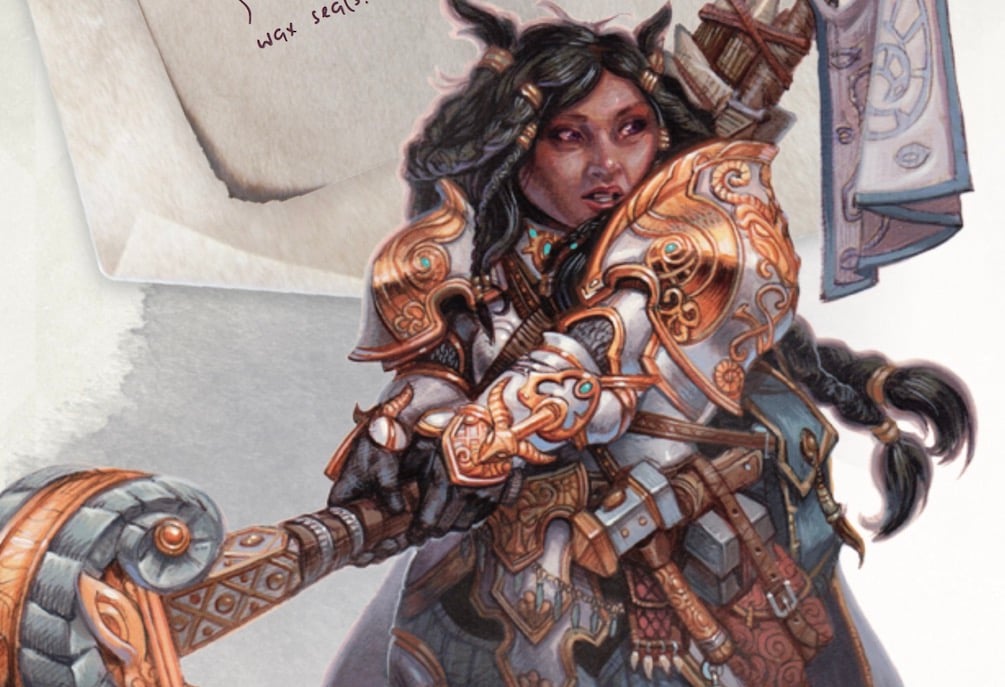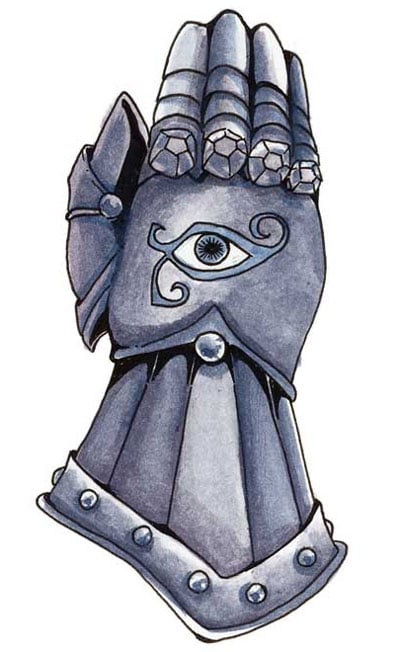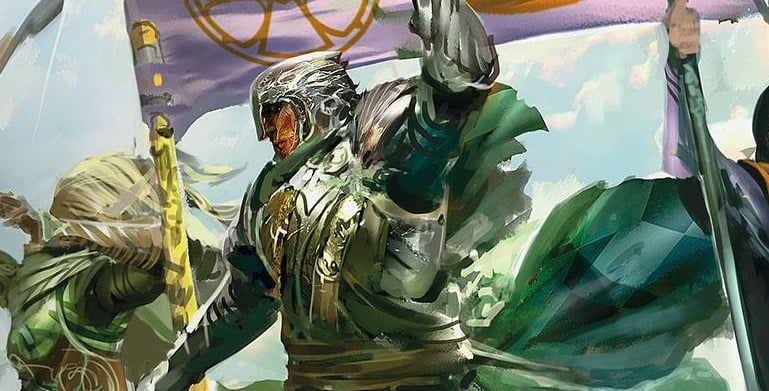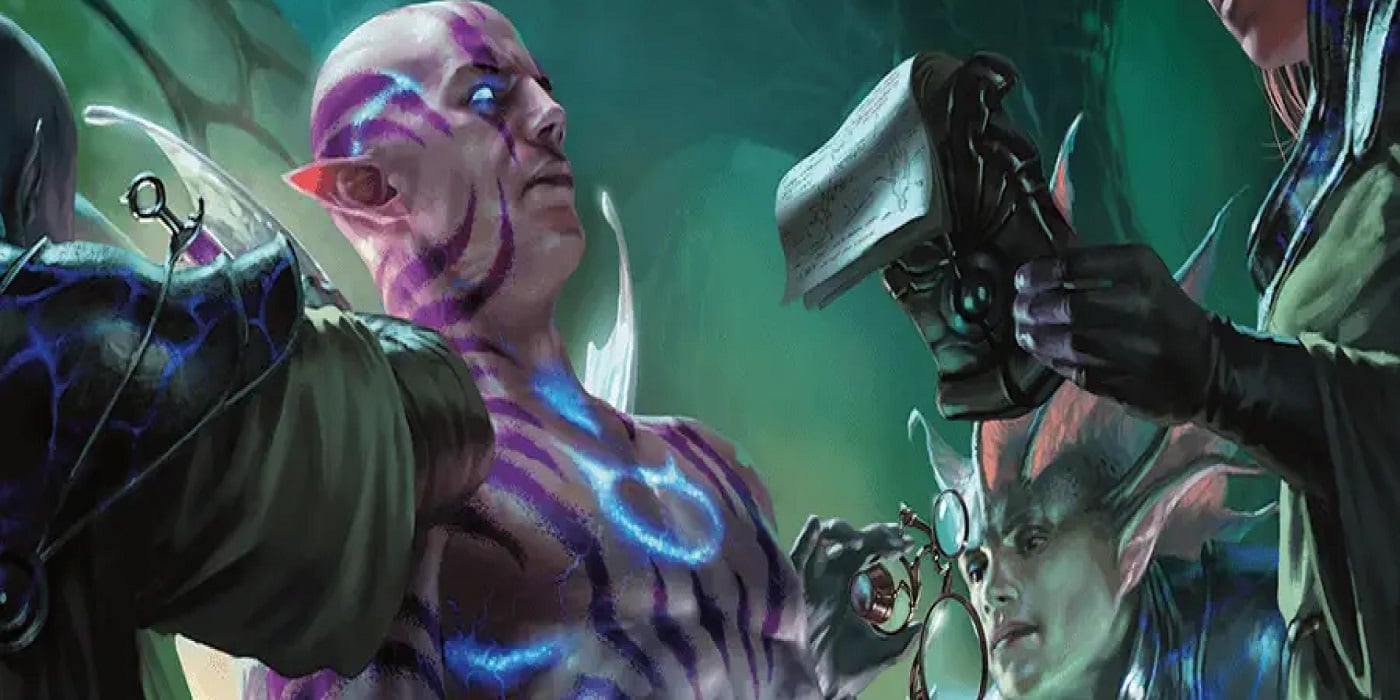D&D 5e Guide – How to Play a Cleric
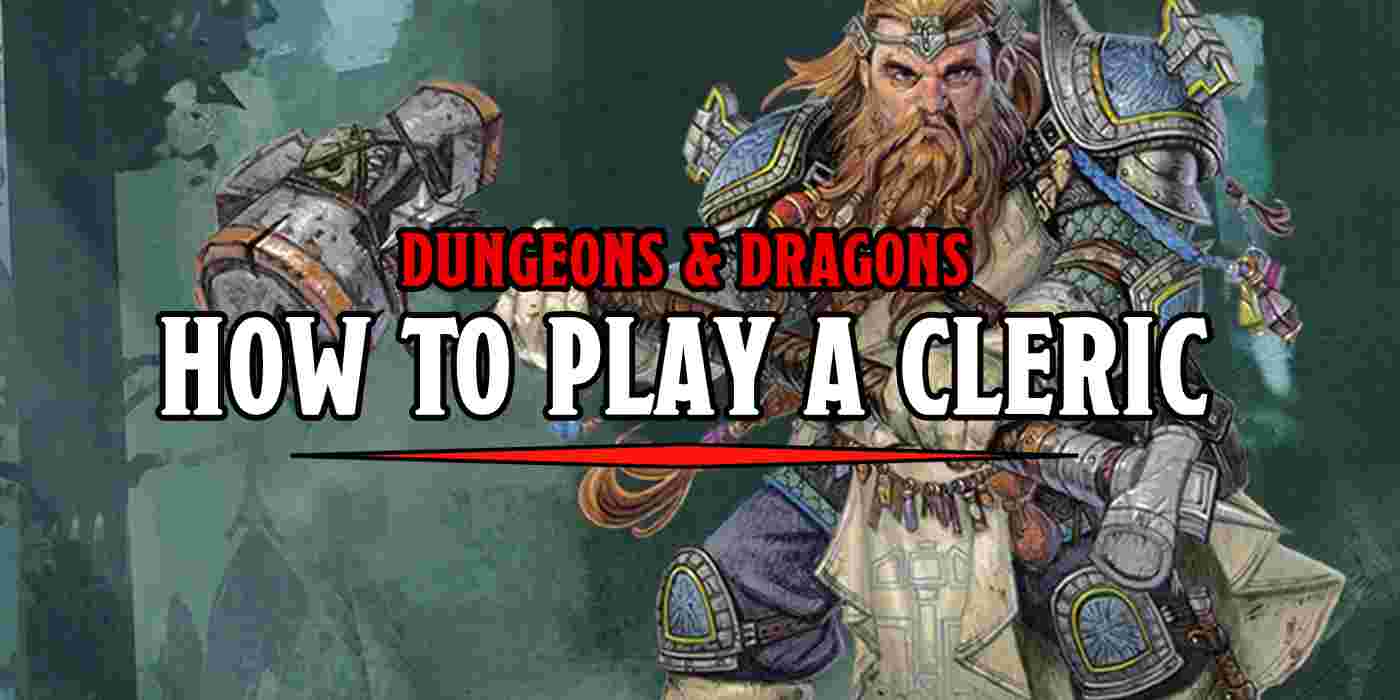
5e Clerics always get cast in the role of the party’s healer — but Clerics can do so many more awesome things for your character.
Let’s talk 5E Clerics. They rank in the top three most popular classes in the game, third to only Fighter and Warlock. But for all their popularity, they often get misunderstood. Because when you think of Clerics, you might first think: ah yes, the best healers in the game. But they can do so much more. The best healers in 5E are actually Druids. But Clerics? They’re among the strongest damage-dealing classes in all of 5th Edition D&D.
A good 5E Cleric can be one of the most effective characters in the game. With access to powerful spells and domains, they’re suited for any role. Whether your party needs a frontline fighter to just a good anchor, there’s no end to what a good cleric can do.
Jump To…
What Makes a 5E Cleric Tick?
Clerics are an odd duck in D&D. They’re casters through and through, and even the most martial-minded cleric will always benefit from casting spells more than attacking. But you can also create a 5E Cleric who’s a melee powerhouse without trying too hard. Your spells make you incredibly versatile, but what really shapes your play style is your domain.
If you’re a cleric, the first things you need to know are how your spells work and what you can do with your channel divinity.
Every cleric has the ability to channel their divine energy to a powerful effect. All clerics can cause the undead to run away from them, which is situationally useful. But that’s nothing to write home about. The real fun comes from your domains.
A good channel divinity power will give you an idea about how the class can play. Whether it’s protecting allies, healing creatures, or making your enemies vulnerable, your channel divinity powers are an extra tool that no other class has access to.
When playing a 5E Cleric, you’ll want to look at what these do, and you’ll want to remember to use them. The best advice is to use them early on when you think a fight might be tough.
Otherwise, you might forget about them and one of the best class features just sits there unused. Better to use it too early than too late. Especially since your main abilities come from your spells.
What Spells to Pick
5E Clerics have access to some of the best spells in the game. Sure, wizards have more variety. But pound-for-pound and level-per-level, it’s hard to match the spells that top the cleric lists.
They have the easiest access to the most popular spell in the game: Cure Wounds, which is always useful. But they are so much more than that.
Depending on how you want to play, spells are there for you. Do you want to play a melee-fighting Cleric? Look for a subclass with Divine Strike and make sure you know the Shillelagh cantrip. You’ll be able to pour everything into Wisdom and still be just as effective.
At 3rd level, you get the best bonus action spell in the game: spiritual weapon. It essentially gives you an extra attack that’s always going to be good. At 5th level, you get one of the best spells in 5th Edition in the form of spirit guardians. This spell lets you control whole fights.
And if you want to protect your party, there are plenty of options from sanctuary to deathward. Here are a few spells to check out at any level:
- 1st – cure wounds, bless, guiding bolt, healing word, sanctuary
- 2nd – aid, spiritual weapon, enhance ability, augury
- 3rd – spirit guardians, revivify, bestow curse, dispel magic
- 4th – banishment, death ward, divination
- 5th – commune, summon celestial, scrying
- 6th – heal, true seeing, heroes’ feast
- 7th – plane shift, etherealness, conjure celestial
- 8th – holy aura, antimagic field
- 9th – mass heal, true resurrection, gate
Which 5E Cleric Subclass to Play
Clerics can vary wildly, and what you do with this class is determined by your subclass. Your domain determines your weapon and armor proficiency, any extra skills you get, and whatever available spells get added to your list.
It also determines what actions you can take with Channel Divinity and whether or not you’re better suited for fighting in melee or casting spells. It’s a huge deal. That’s why you get it at 1st level.
Subclass is the deciding factor in how the 5E Cleric operates. So while there’s always a baseline “every Cleric can do these things” like heal, turn undead, and cast Cleric spells, they can vary wildly depending.
Ask yourself a couple of questions when choosing your subclass. What does your channel divinity power do? What spells are added to your list? And do you get potent spellcasting or divine strike?
Cleric Subclasses
Forge Domain Clerics are capable melee combatants. They excel at Resilience in a fight thanks to their heavy armor. Abilities like Blessing and Soul of the Forge add extra armor bonuses and resistance to Fire, which becomes immunity at higher levels.
Their additional spells let you make a sizable impact in melee, buffing yourself or enemies. At a higher level, they’re able to really control the battlefield with spells like Wall of Fire or Animate Objects.
Pick this class if you want to be a heavily armored brawler who can use spells for that extra boost in between fights.
Grave Domain Clerics are surprisingly good at supporting their friends. If you have ever been leery of paying a healer, or want to try other things while doing so, this class has got you covered.
These folks are all about death, whether they’re preventing, causing, or reversing it. With the Circle of Mortality, your healing spells are maximized when healing a target at 0 hit points. This means you can really get the most out of your heels in dire straits.
But they do more than heal–they are superb casters as well. Their Channel Divinity lets them set up a foe to take double damage from a crucial attack. And their spells allow them to debuff or outright kill their enemies. Plus, you get a little bit more protection from death as you go on.
Pick this subclass if, when the party is half dead, you want to rub your hands together and say, “Not bad… now it’s my turn.” Or if you want to really put the hurt on your DM’s big bads.
The Knowledge Domain is an interesting one. With a name like Knowledge, you might think this one is a powerful casting class. But where it truly excels is the finding of information.
Whether through their skills or their investigatory spells (which will never be in short supply) or just taking them from the minds of their enemies, these 5E Clerics are heavily in the know. They can also be good at making friends with copious suggestions at their disposal.
Pick this class if you want to be the party’s information specialist. If you like playing characters who have the answer, this class is for you.

Life Domain Clerics are, as the name suggests, the best at keeping the party alive. The quintessential supporting class, Life Clerics are masters of healing.
They’re the best at keeping their party at top form, and in later levels can take even the most wounded party member and get them back up to full in no time flat. And with heavy armor and divine strike, as well as spells that lend themselves well to resilience, this subclass makes an excellent addition to any party’s front line.
Play a Life domain Cleric if you want to keep the party going, and want to get in the middle of things.
Light Domain Clerics are casters who have the power of the sun in the palm of their hands. If you envision a Cleric smiting foes with holy fire and light, then you’ve got these Clerics figured out.
They have access to some of the best damage-dealing spells in the game, though they tend to be better at damaging multiple enemies than a single target. But they are excellent at blasting enemies and keeping themselves (and the party) in it for the long haul.
Pick this class if you want to smite foes, and cast fireball, or some variation, on your foes with aplomb, but still have more hit points and armor options.
Clerics who choose the Nature Domain can turn the environment against their foes. In heavy armor, and with spells that either let them control the battlefield or add extra difficulty to navigating it, these are surprisingly resilient controlling types.
Especially with their defensive Channel Divinity. But they can also hit fairly hard against an unprepared enemy, especially if they catch them out in the open.
Pick this class if you want to reshape the battlefield, or if you want to make the most out of your environment.
Peace Domain Clerics are an interesting subclass. Introduced in Tasha’s Cauldron of Everything, they are all about forging bonds that make their team much better at doing violence.
They can forge a bond between creatures that lets them add an extra d4 to attack a few times per day. And they’re great healers thanks to their Channel Divinity powers. The real work from the Peace Domain comes with a list of bonus spells that will make sure you can always protect someone in need.
Pick this class if you want to protect your friends and make them better at fighting each other.

Tempest Domain Clerics are probably one of the most powerful subclasses. They’ve got one of the best Channel Divinity’s (max damage with thunderbolts and lightning? Very very frightening). And they have some of the most generally useful fight-directing spells.
And with good weapons and armor, this subclass has much to offer. Even when you run out of spells, you can still hit and rely on most of your abilities working.
Pick this class if you want to do it all. You’ll do a couple of things really well, control and damage, but this subclass is really good at anchoring a party.
Trickery Domain Clerics are stealthy masters of illusion. They can misdirect foes, tie up combatants with polymorph and dominate, and in general be where they need to be, in a fight or out of it.
With their spell selection, you also have a number of answers to enemy shenanigans. Especially with dispel magic and dimension door at your disposal.
Pick this subclass if you want to pull off cunning victories. If you enjoy incapacitating foes and using stealth and guile to accomplish your goals, this class is the one to go with.
An option for those who want to feel more mystical, Twilight Domain Clerics are all about transitions. They are heavily armed and armored, gaining proficiency with martial weapons and heavy armor.
They also have a channeled ability to immediately grant temporary hit points to any friendly creature nearby (including yourself). It’s a strong contender for melee clerics, especially since they can eventually fly. Pick spirit guardians and hound your enemies until they drop.
Pick this subclass if you want to be the powerful center around which your party fights.
Finally, there are War Domain Clerics. These are the most melee-oriented of the 5E Clerics. With abilities that buff their attacks, or help them buff others, they are great at holding the fight down.
They can turn the tide of a fight in a couple of crucial turns. And they can reliably do that in every fight.
Pick this class if you want to be at the forefront of every fight. If you want to lead your companions into battle and unflinching, face fearsome foes.
Cleric Tips & Tricks
Playing a Cleric is extremely rewarding, because not only can you toss out healing spells to keep your allies in the fight. But you can also make the whole party better. At low level, your spells like bless will make your whole party hit much harder. While healing word helps you bring party members back from death so they can contribute to those important fights.
Once you hit level 3, you get your first “must-pick” spell, in the form of Spiritual Weapon, which gives you that sweet sweet bonus action attack you can keep going round by round every chance you get. This spell doesn’t interfere with concentration and effectively doubles your firepower every encounter that you cast. What’s more, this spell works with bless meaning you can empower your own attacks at the same time.

At level 5, the Cleric really starts to shine in the form of spirit guardians. This is one of the best spells in the game. It defines the Cleric’s playstyle. You’ll never regret having it on your prep list, even if you don’t end up casting it. This spell deals 3d8 damage in an aura to every creature you decide is affected by it, and it also halves their speed. All you have to do is cast the spell, get spiritual weapon going, and then run up to fight people.
That’s just one way to play a 5E Cleric. Powerful whatever you pick, they can add a lot to any party.
Happy adventuring!



